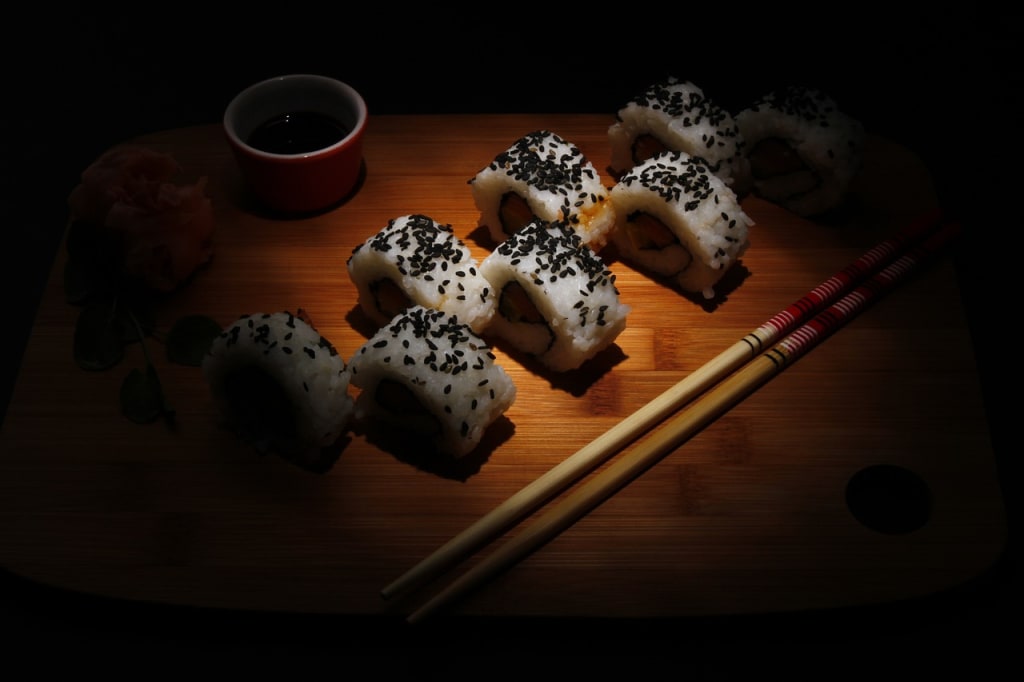Why 1.5 billion people eat with chopsticks
do you know how to use it?

Transcriber: TED Translators admin It is such a sort of instrumental part of our cooking vocabulary, in terms of the utensils. And it was like, that's interesting, there are people who live without chopsticks. [Small Thing.] [Big Idea.] Chopsticks are a pair of two long sticks used to eat things with one hand. Holding chopsticks is a little bit like holding a pencil, except that you have two of them and you move them together in a pincer movement. Most of them are made out of wood. They're also made out of plastic, bamboo, jade, gold, silver and even ivory, though I think that's not so cool anymore. Chopsticks are really well designed for eating small bits of food. They're good for picking up noodles. If you're skilled, you can eat rice, pick up dumplings, pieces of meat. There are some no-nos with chopsticks. You should not use the chopsticks like drumsticks, which I know is tempting. You don't want to stick chopsticks into a bowl of rice face-up. And the reason for that is it actually looks like a bowl of incense, so it sort of echoes death. Chopsticks are used in a huge portion of the world, across much of Asia, about 1.5 billion people are covered in the chopsticks sphere. Different cultures have slightly different variations of chopsticks. Chinese chopsticks will tend to be long and round, Korean chopsticks are flatter and often made of metal and Japanese chopsticks tend to be round and very, very pointy. While chopsticks are actually really commonplace in American society today, there was definitely a time in the late 1800s where this idea that Asian men, because they ate rice with sticks, were of a different quality than American men, who ate proper meat with a knife and fork. But when China and the United States began their diplomatic engagement in the 1970s, Richard Nixon, Henry Kissinger, had to practice eating with chopsticks. What's been really interesting to see is that as Asian cuisine has moved from the East into the West, chopsticks have become part of the experience. There's evidence of chopsticks as long ago as the Shang dynasty, which is about 3000 years ago, and they loved tripods during the Shang dynasty. So when you cook with these big tripods, chopsticks were actually really useful, because it was a way for you to stir and to reach without getting burned as the water was boiling in these really big pots. Chinese culture has knives and has forks. It uses them in many cases for cooking. But in terms of like what moved into the dining room, it was the chopsticks. One of the things about Asian cooking is that it often comes in very small pieces. And I think part of that has to do with the fact that it's actually a lot more energy-efficient to cook little pieces quickly. But also, then you don't have to cut them. So you have a circular influence, where the type of food that is cooked allows people to use chopsticks, and then the fact that you have chopsticks influences the food that you can cook. But at the same time, chopsticks reflect the communal nature of eating food. You'll have these dishes that you put in the middle, it's very family style. You go in with your chopsticks, and you put it on your rice, and then you eat individually. There's actually a famous sort of legend where everyone has these really, really long chopsticks, like way too long for them to feed themselves. And so in hell, everyone starves, because they can't pick up food and put it in their mouths. But in heaven, people take the same chopsticks and then feed each other.
About the Creator
Rowan Sharkawy
someone who love to know anything & share it with every one
welcome to my profile
Enjoyed the story? Support the Creator.
Subscribe for free to receive all their stories in your feed. You could also pledge your support or give them a one-off tip, letting them know you appreciate their work.






Comments
There are no comments for this story
Be the first to respond and start the conversation.